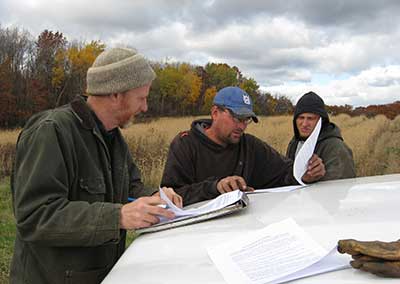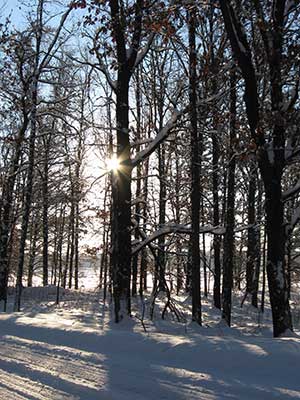Your Sources of Help
Are funding and experts available to landowners
Clean water and air, healthy soil, diverse and abundant wildlife, productive timber. These shared values of landowners and society are in everyone’s best interests.

This is why federal, state, county government agencies, as well as some private organizations, offer both money and technical expertise to landowners to carry out conservation practices.
Some agencies call this support “landowner assistance” while others call it “cost-sharing.” But most of the time, landowners use the term “grant” programs.
How much do cost-share programs pay?
There are different means of delivering assistance:
- Landowners collect receipts and then the agency reimburses a percentage of the final cost.
- The agency pays a fixed rate per practice per measurable unit (acres, area, number of trees planted, etc.).
Most programs only cover a percentage of the work’s cost since the landowner receives a large benefit from implementing the practice. In other words, these programs are not a way for you to make money. Most awarded grants are also taxable as income.
What practices are eligible?
The goal of most grant programs is to incentivize landowners to implement a conservation practice that benefits society. Examples include planting trees, installing erosion control structures, and developing a forest stewardship plan.
Certain practices may also be deemed a priority at various times, or different agencies may have different priorities. A forester or natural resources professional can clarify which practices are eligible.

Am I eligible?
Eligibility requirements vary by program, but in general landowners are eligible if they:
- Own more than 10 and less than 500 contiguous acres of non-industrial, private forest within Wisconsin.
- Have a forest stewardship plan in place, or are applying to prepare one through a cost-share program.
Additionally, Managed Forest Law lands are eligible for cost-share programs.
How long do I have to complete the practice?
The timeline depends on the program. Some programs require the practice to be completed within one year; others have deadlines that extend to three years.
Can I use more than one program to pay for the same practice?
Applying to multiple programs to cover the same practice is normally not allowed.
Which program is right for me?
To learn more about the various programs, which one is the fit best for you, and who to contact to take the next step, visit our Financial Help pages.
Talking with your neighbors and other landowners can also be helpful, and your county forester or local Natural Resources Conservation Service (NRCS) office can offer guidance, as well.
